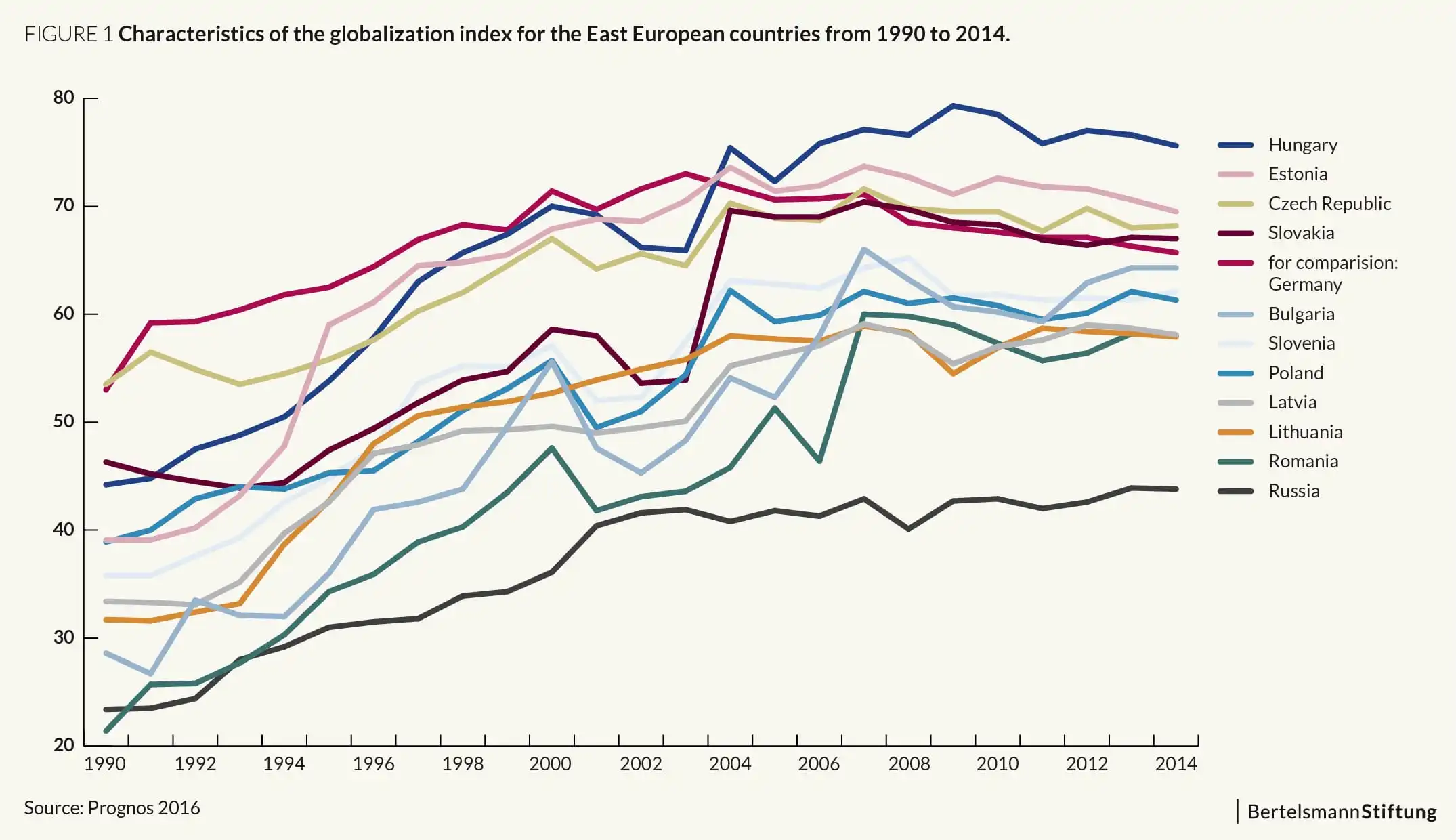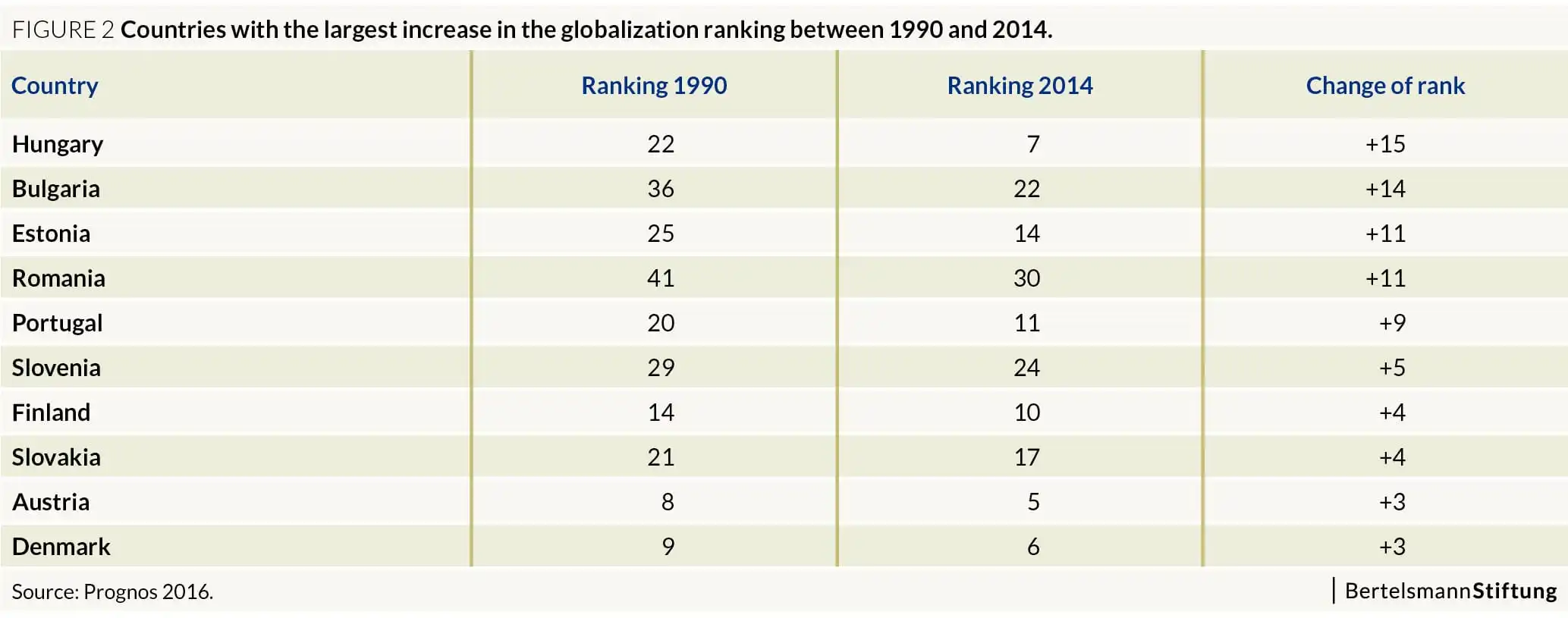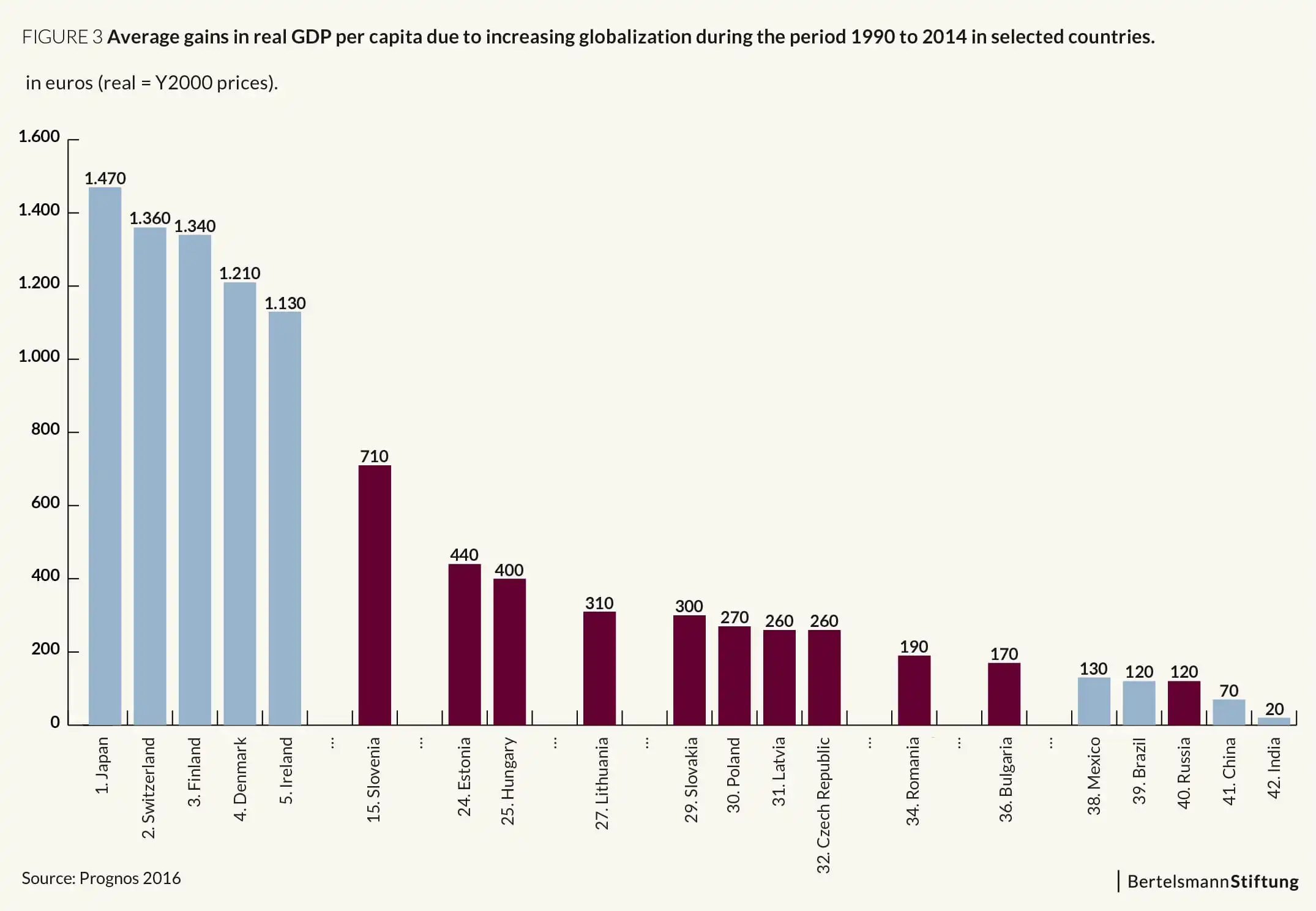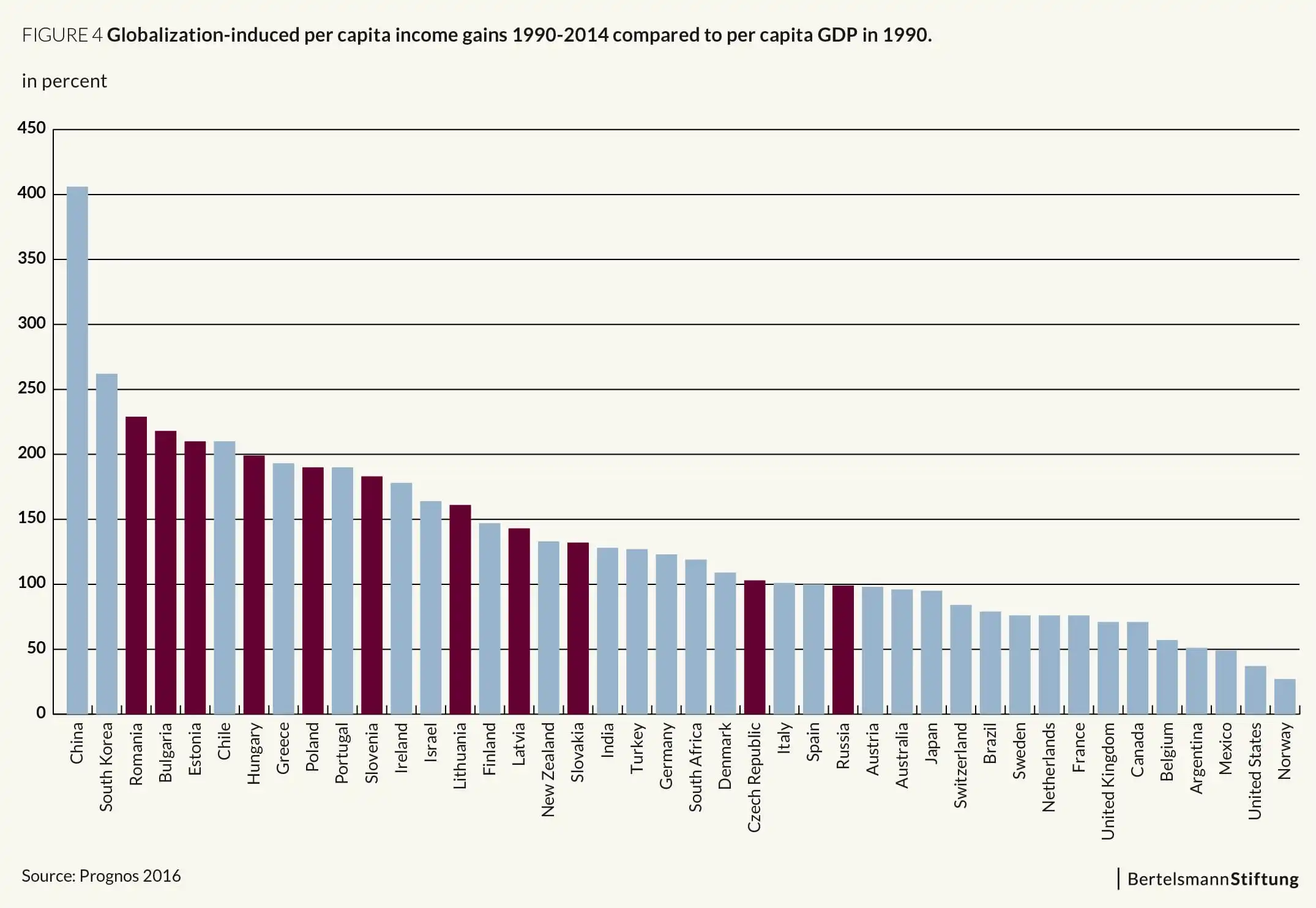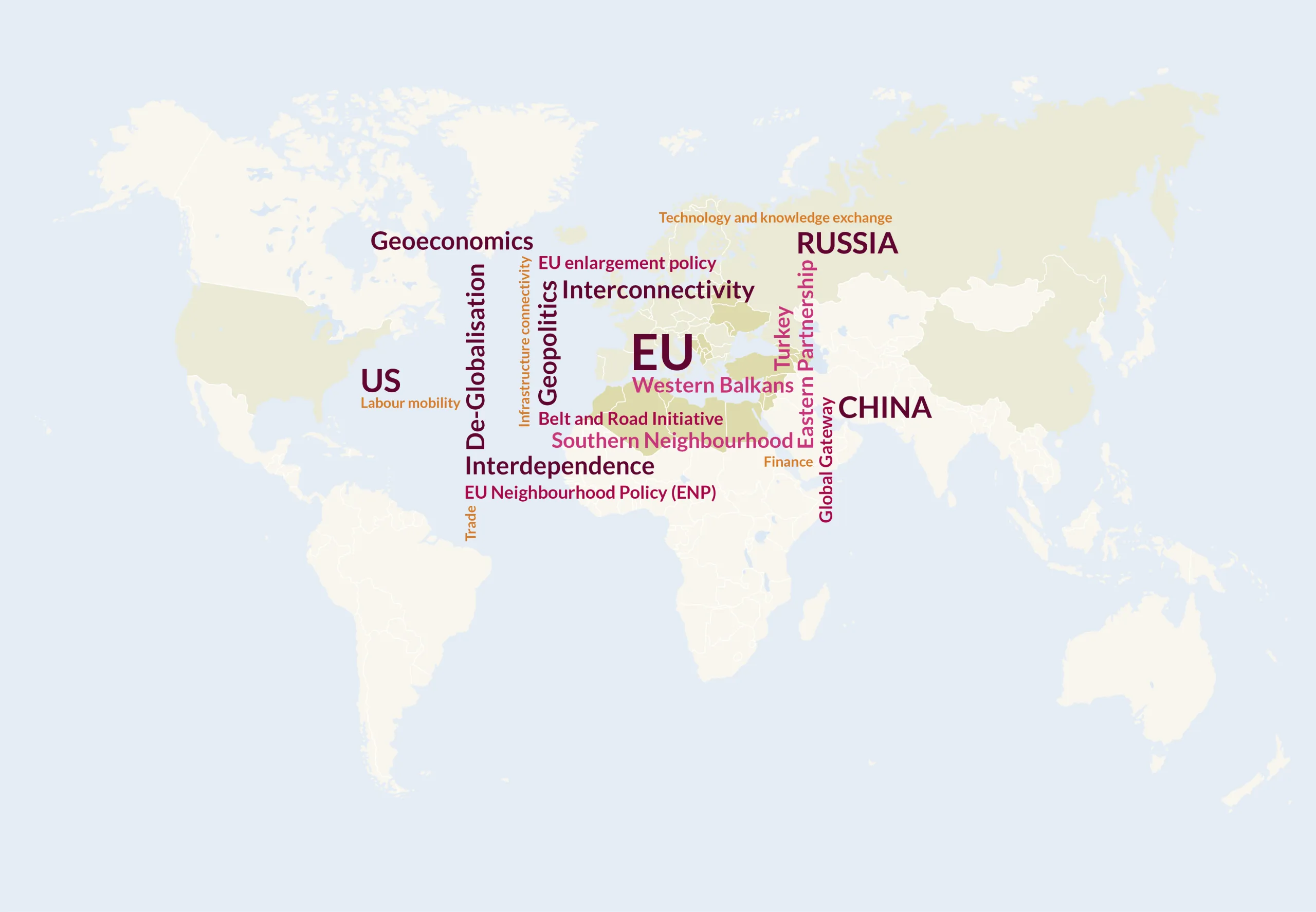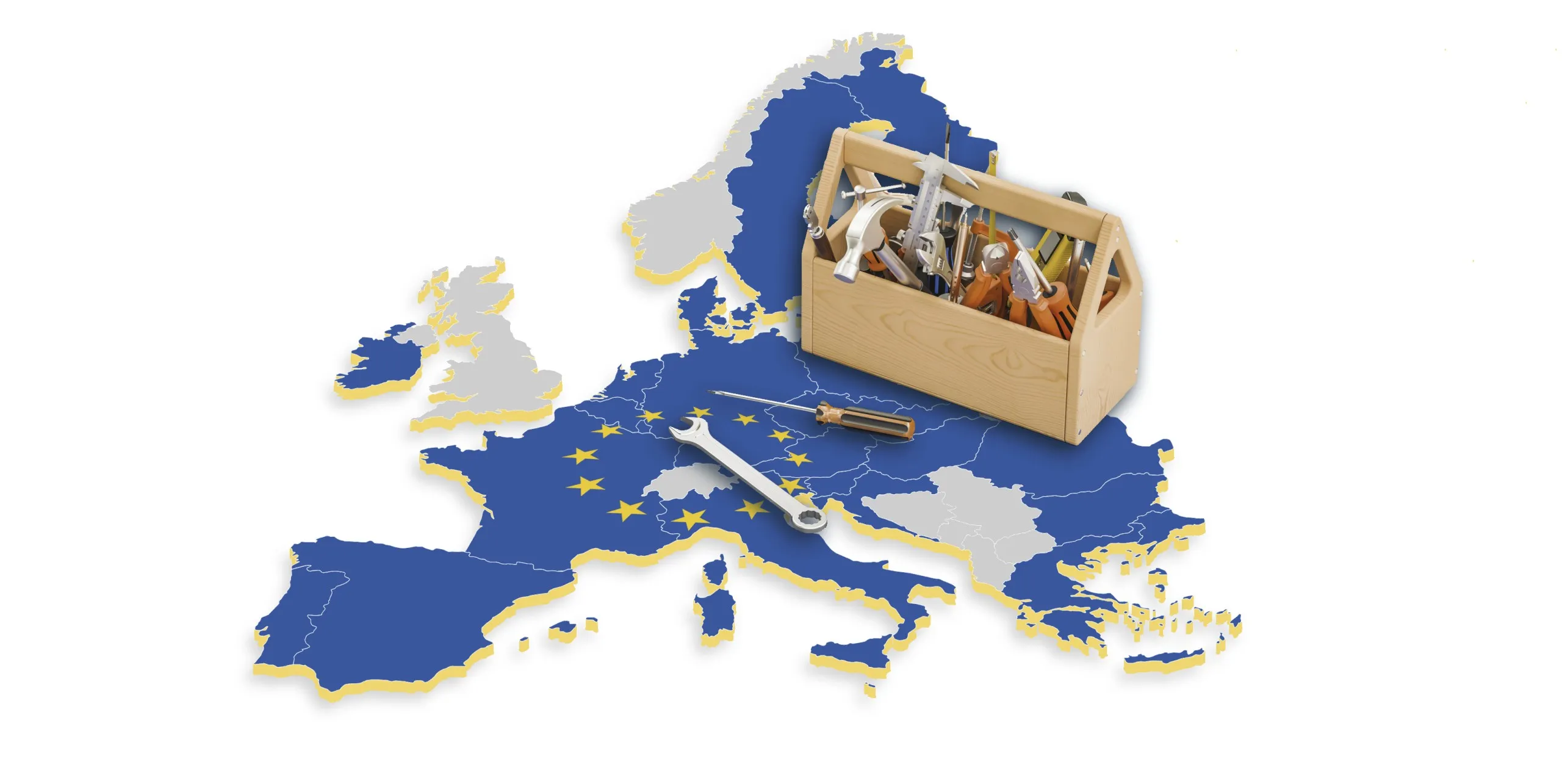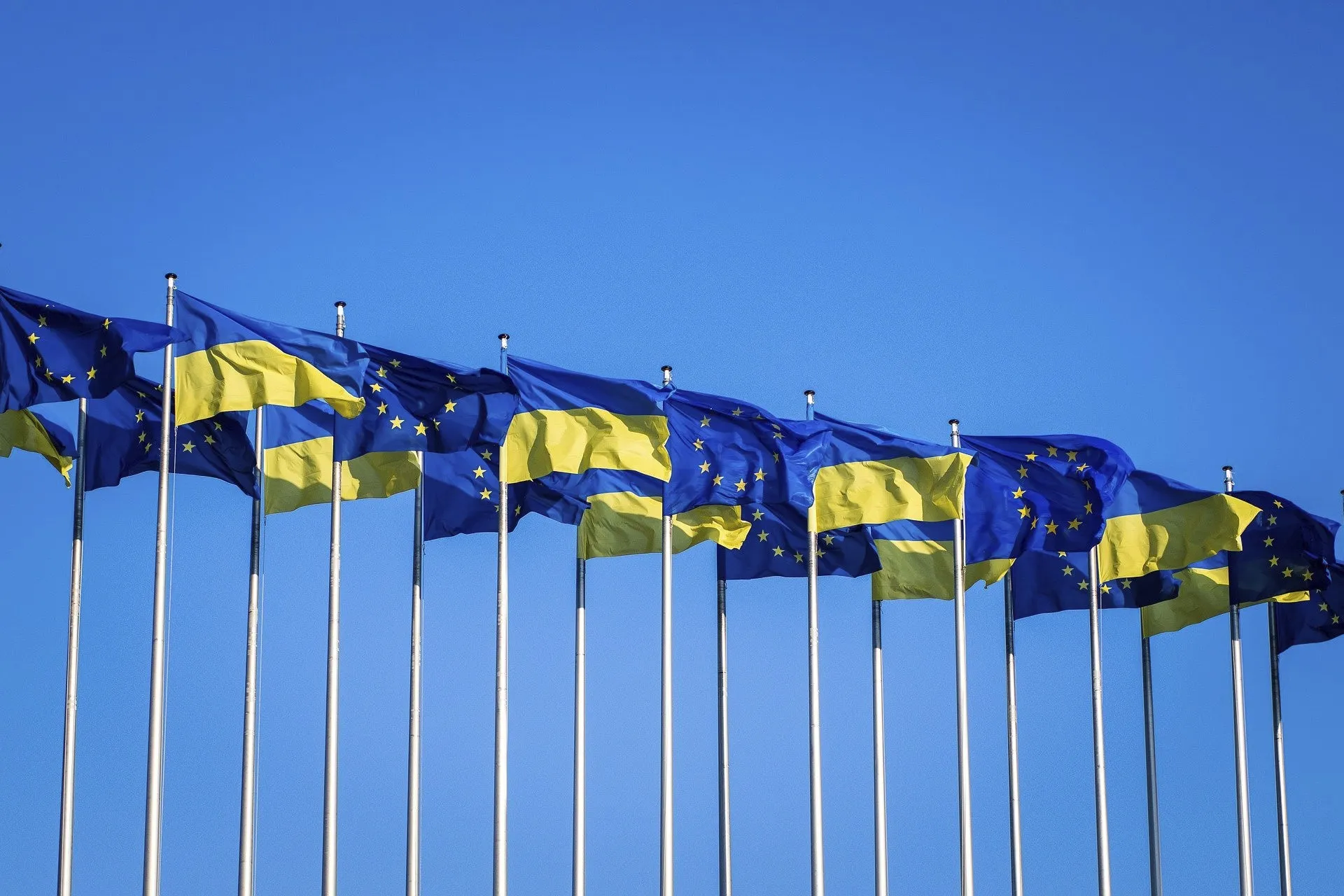
Last week we published the main results of our Globalization Report 2016 covering 42 countries. This blog post takes a deeper look at Central and East European economies, which achieved the largest jumps in the ranking of globalization.
Eastern Europe – largest increases in global interconnection since 1990
At the beginning of the investigation period of the globalization report, in 1990, most of the Eastern European countries had a relatively low level of international interconnection. Back then, countries such as Romania and Bulgaria were at the bottom of the ranking of interconnected countries. Bulgaria, for example, started with an index value of 28.6 in 1990. Romania scored even lower with 21.4. Until 2007, the year before the Lehman collapse, both countries saw a sharp increase in their globalization index scores. Bulgaria reached an index value of 66 in 2007, Romania achieved 60 index points. Hence both countries had more than doubled their globalization index scores. The same holds true for almost all Eastern European countries, with the exception of Russia (see figure 1).
After the Lehman collapse, globalization declined in almost all countries under investigation, including those in Eastern Europe. Nevertheless, the strong increases in the years before were larger than average, such that Eastern European countries improved their ranks in comparison with all other countries considered. Hence Eastern Europe has the countries which saw the largest rises in our globalization ranking between 1990 and 2014 (see Figure 2).
Globalization-induced growth effects for East Europe
As described in our blog post last week, an increase in the globalization index by one index point increases the growth rate of real GDP per capita by around 0.3 percentage points. Due to the strong rise in global interconnectedness, all Eastern European countries are showing significant increases in real GDP per capita. Nevertheless, compared to the globalization-induced GDP increases in industrialized countries, the absolute gains are relatively low: for most of the Eastern European countries, the annual gain in real GDP per capita during the period 1990 to 2014 is between 200 and 440 euros. This is much lower than in highly developed countries such as Japan and Switzerland where these gains are about 1,400 euros on average per person and year (see figure 3). Russia has the lowest gains. Apart from the low initial level of GDP per capita in 1990, this result is also due to the stagnant globalization of Russia since 2002.
The main reason for the relatively small gains is the low starting level of real GDP per capita in 1990. Hungary and Estonia had a GDP per capita of about 5,000 euros, Poland of about 3,300 euros and Romania of only 2,000 euros. German GDP per capita reached 22,000 euros in 1990. And the Japanese value attained 37,000 euros. Due to these differences, even a large percentage growth in East Europe results in an absolute GDP increase which is lower than in Germany and Japan.
The results look quite different, if we take the annual gains of increasing globalization in relation to the initial level of GDP per capita in 1990. Working with the cumulative GDP gains between 1990 and 2014, Romania achieves a per capita GDP increase of 4,500 euros. This accounts for 230 percent of the GDP per capita in 1990. In Bulgaria and Estonia the cumulative GDP gains reach 220 respectively 210 percent of the initial GDP level. This is a much higher value than for industrialized countries such as Germany (about 120 percent), the United Kingdom (about 70 percent) and the US (37 percent, see figure 4). Once again, the result for Russia is the lowest of all eleven East European countries under investigation.
Conclusion
The progression of globalization during the last 25 years had a positive impact on economic growth in Eastern Europe. Engaging in international trade has provided many countries in Eastern Europe with the opportunity to catch up to the industrialised countries. However, the Russian example shows that catching up is not automatic. Not engaging in international trade implies foregoing important opportunities for growth and development.
These results are particularly interesting in light of the recent stagnation of world trade. Intensified trade connections have provided many countries – not only in Eastern Europe – with an opportunity for growth and development. Should globalisation continue to stagnate or even to decrease, catching-up to the developed world becomes harder and the substantial growth potential is not realised. Economic growth is however a prerequisite to lift many people out of poverty. Especially when starting out from a comparatively low level, even comparatively small absolute amounts in welfare gains can make a substantial difference to people’s lives.


